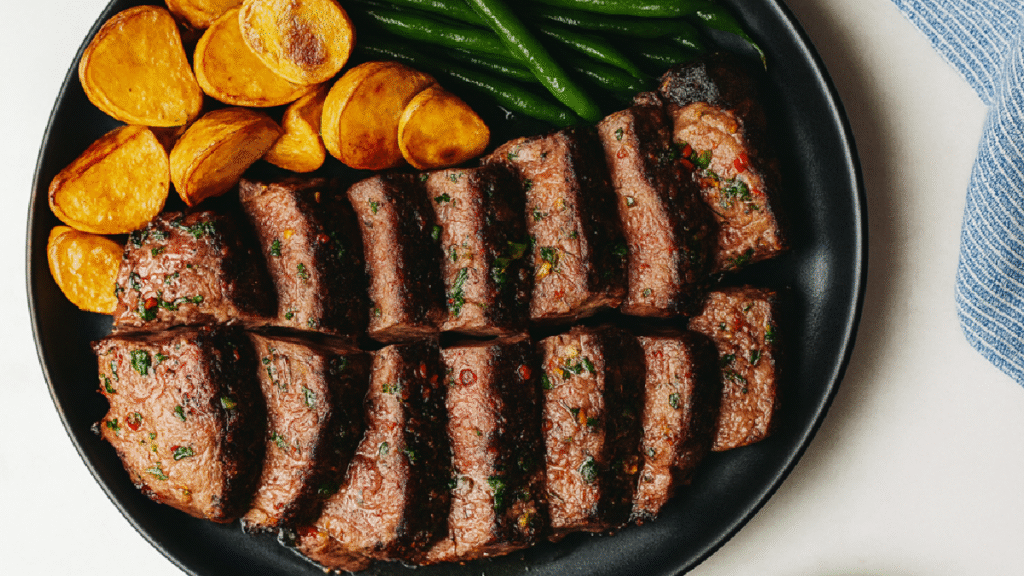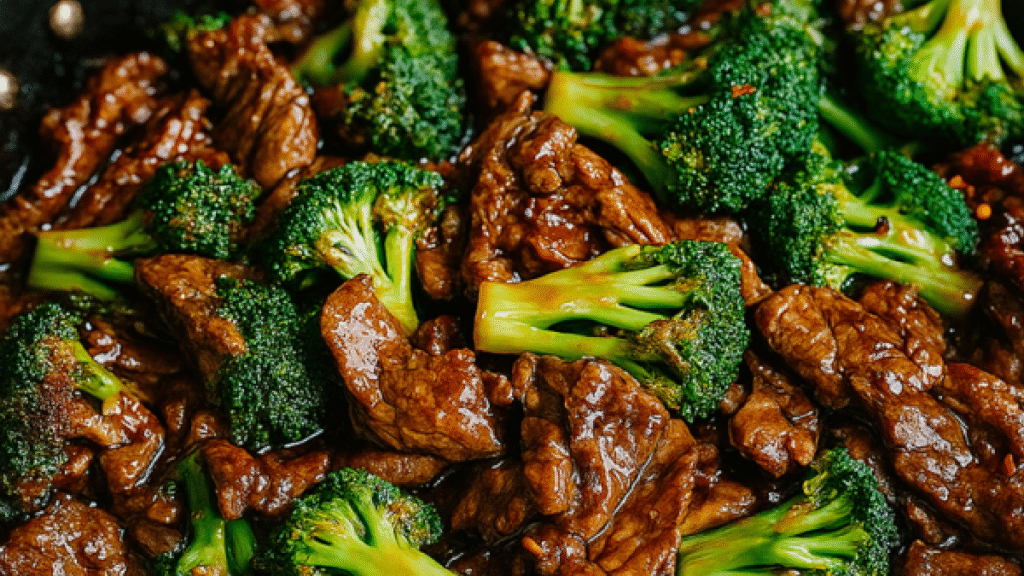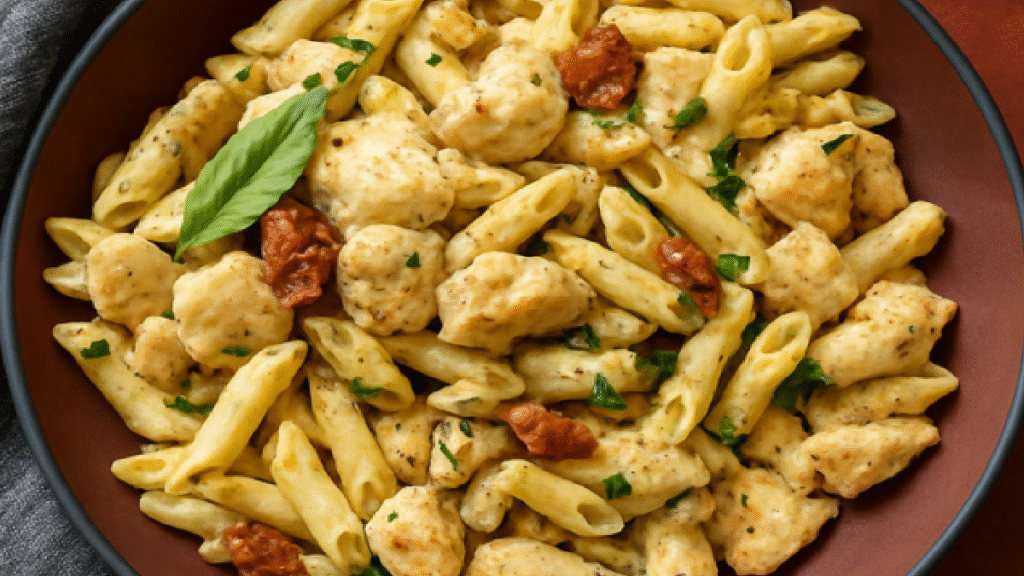Indulge in the rich flavors of a perfectly cooked oven-roasted steak, elevated by the aromatic essence of garlic herb butter. This mouth-watering dish is perfect for special occasions, offering a tender and juicy experience that will leave your guests impressed.
The key to achieving a perfect steak lies in proper seasoning and cooking techniques. By combining a flavorful garlic herb butter with a high-quality rib-eye steak, you can create a truly unforgettable culinary experience.
Key Takeaways
- Learn how to cook a tender and juicy oven-roasted steak
- Discover the secret to making flavorful garlic herb butter
- Understand the importance of proper seasoning and cooking techniques
- Impress your guests with a mouth-watering steak dish
- Perfect your cooking skills for special occasions
The Art of Cooking Steak to Perfection
The art of cooking steak to perfection is a nuanced blend of traditional methods and modern culinary innovations. Steak remains a beloved dish globally, thanks to its rich flavor profile and the versatility it offers in terms of cooking techniques.
Why Steak Remains a Culinary Favorite
Steak’s enduring popularity can be attributed to its rich marbling, which contributes to its tender texture and flavorful taste. The ability to customize steak to individual preferences, whether it’s rare, medium, or well-done, further enhances its appeal. Additionally, steak can be prepared using various methods, from grilling and pan-searing to oven roasting, making it a versatile option for chefs and home cooks alike.
The French Approach to Steak Preparation
French cuisine is renowned for its sophisticated approach to cooking steak, emphasizing quality ingredients and precise cooking techniques. The French method often involves seasoning the steak with herbs de Provence and cooking it to the perfect doneness, typically using a combination of pan-searing and oven finishing. This technique ensures a crispy crust on the outside while maintaining the desired level of doneness on the inside.
The French culinary tradition also places a strong emphasis on the quality of the steak itself, with preferences for certain cuts like entrecôte and bavette. By focusing on both the quality of the ingredients and the precision of the cooking method, the French approach elevates steak to a gourmet dining experience.
Why Cooking Steak in the Oven Yields Amazing Results
Cooking steak in the oven is a game-changer for achieving tender and juicy results. This method offers several advantages over traditional cooking techniques.
Benefits of Oven-Baked Steaks
Oven-roasting steak provides even heat distribution, ensuring that the steak is cooked consistently throughout. This results in a tender and juicy final product. The benefits of oven-baked steaks include:
- Consistent cooking results
- Reduced risk of overcooking
- Easy to achieve a perfect crust
Comparison to Other Cooking Methods
Compared to grilling or pan-searing, oven-roasting steak offers a more controlled cooking environment. For instance, grilling can sometimes lead to uneven cooking, while pan-searing can result in a burnt exterior before the interior is fully cooked. Oven-roasting allows for a more forgiving cooking process.
French Culinary Traditions and Oven Cooking
French cuisine often employs oven-roasting for cooking steak, emphasizing the importance of precise temperature control and even cooking. Techniques like roti de boeuf showcase the potential of oven-roasting for achieving tender and flavorful steaks.
By adopting oven-roasting techniques, home cooks can achieve professional-quality steaks with minimal effort. The key is to understand the benefits and nuances of oven-roasting, allowing for a more enjoyable and stress-free cooking experience.
Selecting the Best Cuts of Steak for Oven Cooking
The journey to a perfectly cooked oven steak begins with choosing the ideal cut, a crucial step often overlooked. Different steak cuts offer unique characteristics, such as marbling, tenderness, and flavor, which are essential considerations for oven cooking.
Ribeye: The Marbled Marvel
The ribeye is renowned for its marbling, which contributes to its tender and flavorful profile when cooked. The fat distribution within the meat ensures that it remains juicy, making it a popular choice for oven cooking.
New York Strip: The Classic Choice
The New York strip, known for its rich flavor and firm texture, is another excellent option. Its balance of tenderness and flavor makes it a favorite among steak enthusiasts.
Filet Mignon: The Tender Option
For those seeking a leaner cut, filet mignon is an excellent choice. It is known for its tenderness and mild flavor, although it requires careful cooking to avoid overcooking.
T-Bone and Porterhouse: The Best of Both Worlds
T-bone and porterhouse steaks offer a combination of different cuts in one, providing a varied dining experience. They include both the sirloin and the tenderloin, making them a great option for those who want to enjoy the best of both worlds.
French Cuts: Entrecôte and Bavette
French cuisine introduces unique cuts such as entrecôte and bavette. Entrecôte, typically cut from the rib section, is known for its rich flavor, while bavette, or flank steak, offers a robust taste and tender texture when cooked correctly.
Essential Ingredients for Garlic Herb Butter
Crafting the perfect garlic herb butter begins with selecting the finest ingredients. The quality of your garlic herb butter is directly related to the quality of its components.
Butter Selection and Quality
The foundation of great garlic herb butter is high-quality butter. European-style butters, known for their rich flavor and high fat content, are ideal for this recipe. French butter varieties, such as those from Normandy, are renowned for their exceptional taste and texture.
French Butter Varieties
French cuisine offers a range of exquisite butters, including Beurre d’Isigny and Beurre de Baratte. These butters are made using traditional methods that enhance their flavor and quality.
Fresh vs. Dried Herbs
When it comes to herbs, the choice between fresh and dried can significantly impact the flavor of your garlic herb butter. Fresh herbs provide a vibrant, aromatic flavor, while dried herbs offer a more concentrated taste. Traditional French herb combinations often include parsley, chives, and thyme.
Traditional French Herb Combinations
French cuisine is famous for its intricate herb blends. A classic combination includes parsley, chives, and tarragon, which complement the richness of butter and garlic beautifully.
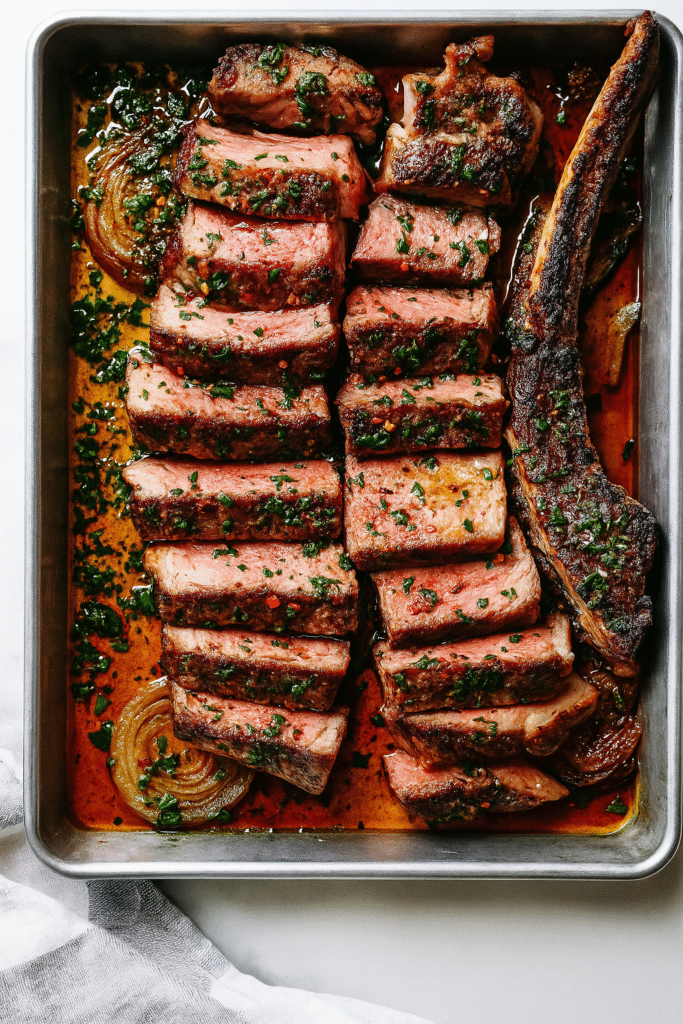
Garlic Preparation Techniques
Proper garlic preparation is crucial for a smooth, well-balanced flavor. Techniques such as mincing or crushing garlic can release its full flavor potential. For garlic herb butter, a combination of minced garlic and fresh herbs creates a harmonious and aromatic compound.
Creating the Perfect Garlic Herb Butter Compound
A well-crafted garlic herb butter can transform a simple steak into a culinary masterpiece. This compound butter is not just a flavor enhancer; it’s an experience that elevates the entire dining experience.
Step-by-Step Mixing Process
To create the perfect garlic herb butter, start by softening high-quality butter to room temperature. Then, mix in minced garlic and your choice of fresh or dried herbs. The key is to balance the flavors so that no single ingredient overpowers the others.
Flavor Enhancement Tips
For an added depth of flavor, consider incorporating ingredients like lemon zest or grated Parmesan cheese into your garlic herb butter. Experimenting with different herb combinations, such as parsley, thyme, and chives, can also yield unique and delicious results.
Make-Ahead and Storage Options
One of the advantages of garlic herb butter is that it can be made ahead and stored. Simply wrap it tightly in plastic wrap or parchment paper and refrigerate for up to a week or freeze for longer storage. For more recipe ideas on make-ahead dishes, check out our butternut squash recipe.
French-Inspired Herb Butter Variations
For a French twist, try adding a pinch of fleur de sel or a sprinkle of paprika to your garlic herb butter. You can also experiment with different types of herbs commonly used in French cuisine, such as tarragon or rosemary, to create a truly authentic flavor profile.
Preparing Your Steak for Optimal Results
Achieving a perfectly cooked steak begins long before it hits the oven. Proper preparation is crucial for bringing out the best flavors and textures in your steak.
Bringing Steak to Room Temperature
Before cooking, it’s essential to bring your steak to room temperature. This simple step ensures more even cooking and helps prevent the outside from becoming overcooked before the inside reaches the desired temperature.
Seasoning Techniques
Seasoning is a critical step in preparing your steak. Using a mix of salt, pepper, and other herbs, you can enhance the natural flavors of the steak. French culinary traditions often incorporate a blend of herbs like thyme and rosemary for added depth.
Dry Brining Benefits
Dry brining, or pre-salting, involves rubbing the steak with salt and letting it sit before cooking. This technique enhances the steak’s natural flavors and improves its texture.
French Seasoning Approaches
French cuisine is renowned for its sophisticated seasoning techniques. Incorporating elements like garlic, shallots, and a touch of paprika can elevate your steak’s flavor profile, aligning with traditional French culinary traditions.
Essential Equipment for Cooking Steak in the Oven
To achieve a perfectly cooked steak in the oven, having the essential equipment is crucial. The right tools not only simplify the cooking process but also ensure that your steak turns out flavorful and cooked to your desired level of doneness.
Cast Iron Skillet Benefits
A cast iron skillet is a versatile and indispensable tool for cooking steak in the oven. It retains heat exceptionally well, allowing for a consistent cooking temperature. This characteristic is crucial for achieving a perfectly seared crust on your steak.
Meat Thermometer Importance
Using a meat thermometer is the most accurate way to determine if your steak has reached your desired level of doneness. It eliminates guesswork, ensuring that your steak is cooked to perfection every time. For the best results, insert the thermometer into the thickest part of the steak, avoiding any fat or bone.
Oven-Safe Pans and Dishes
Not all pans are suitable for oven use. When selecting a pan for cooking steak in the oven, it’s essential to choose one that is oven-safe. Materials like stainless steel and cast iron are good options. For a unique twist, you can explore traditional French cookware, such as those used for French delicacies.
Traditional French Cookware Options
French cuisine is renowned for its exquisite cookware, much of which is designed for oven use. Traditional options include heavy, heat-retentive pots and pans made from materials like copper and cast iron. These not only cook your steak evenly but also add a touch of elegance to your cooking experience.
- Cast iron skillets for even heat distribution
- Meat thermometers for precise doneness
- Oven-safe pans for versatility
- Traditional French cookware for an authentic touch
Mastering the Garlic Herb Butter Steak in Oven Technique
Oven-roasting a steak with garlic herb butter is an art that requires precision, patience, and practice to master. This technique combines the rich flavors of garlic and herbs with the tenderness of a perfectly cooked steak, making it a culinary delight.
Preheating Your Oven and Pan
Preheating your oven and pan is a crucial step in achieving a perfectly cooked steak. Start by preheating your oven to the desired temperature, typically between 400°F to 450°F (200°C to 230°C). Meanwhile, place your cast iron skillet or oven-safe pan in the oven to preheat as well. This ensures that the pan is hot when you sear the steak, creating a beautiful crust.
Searing Techniques
Searing the steak is essential for locking in juices and creating a flavorful crust. Remove the preheated pan from the oven and place it over high heat on your stovetop. Add a small amount of oil to the pan, then carefully place the steak in it. Sear the steak for 1-2 minutes on each side, depending on its thickness and your desired level of browning.
Oven Temperature and Timing
After searing, transfer the pan to the preheated oven. The oven temperature and cooking time will depend on the steak’s thickness and your desired level of doneness. Use a meat thermometer to check the internal temperature. For a medium-rare steak, aim for an internal temperature of 130°F to 135°F (54°C to 57°C).
Applying the Garlic Herb Butter
During the last few minutes of cooking, apply the garlic herb butter to the steak. This allows the butter to melt and infuse the steak with its rich, aromatic flavors. You can also baste the steak with the pan juices to enhance the flavor further.
Resting Your Steak
Once the steak is cooked to your liking, remove it from the oven and let it rest for a few minutes. This allows the juices to redistribute, making the steak more tender and flavorful when sliced.
French Chef Tips and Secrets
French chefs often emphasize the importance of using high-quality ingredients and respecting traditional techniques. For a truly authentic experience, consider using French-inspired herb butter variations and pairing your steak with classic French sides, such as Pommes Frites or Haricots Verts.
Temperature Guide for Perfect Doneness
Mastering the art of cooking steak involves understanding the temperature guide for perfect doneness. Achieving the ideal doneness is crucial for a delightful dining experience, and it all starts with knowing the right internal temperatures for your steak.
Rare to Well-Done Temperature Chart
The internal temperature of a steak determines its doneness. Here’s a simple temperature chart to guide you:
- Rare: 120°F – 130°F (49°C – 54°C)
- Medium Rare: 130°F – 135°F (54°C – 57°C)
- Medium: 140°F – 145°F (60°C – 63°C)
- Medium Well: 150°F – 155°F (66°C – 68°C)
- Well Done: 160°F – 170°F (71°C – 77°C)
Using a Meat Thermometer Correctly
A meat thermometer is an essential tool for achieving perfect doneness. To use it correctly, insert the thermometer into the thickest part of the steak, avoiding any fat or bone. For an accurate reading, wait for a few seconds until the temperature stabilizes.
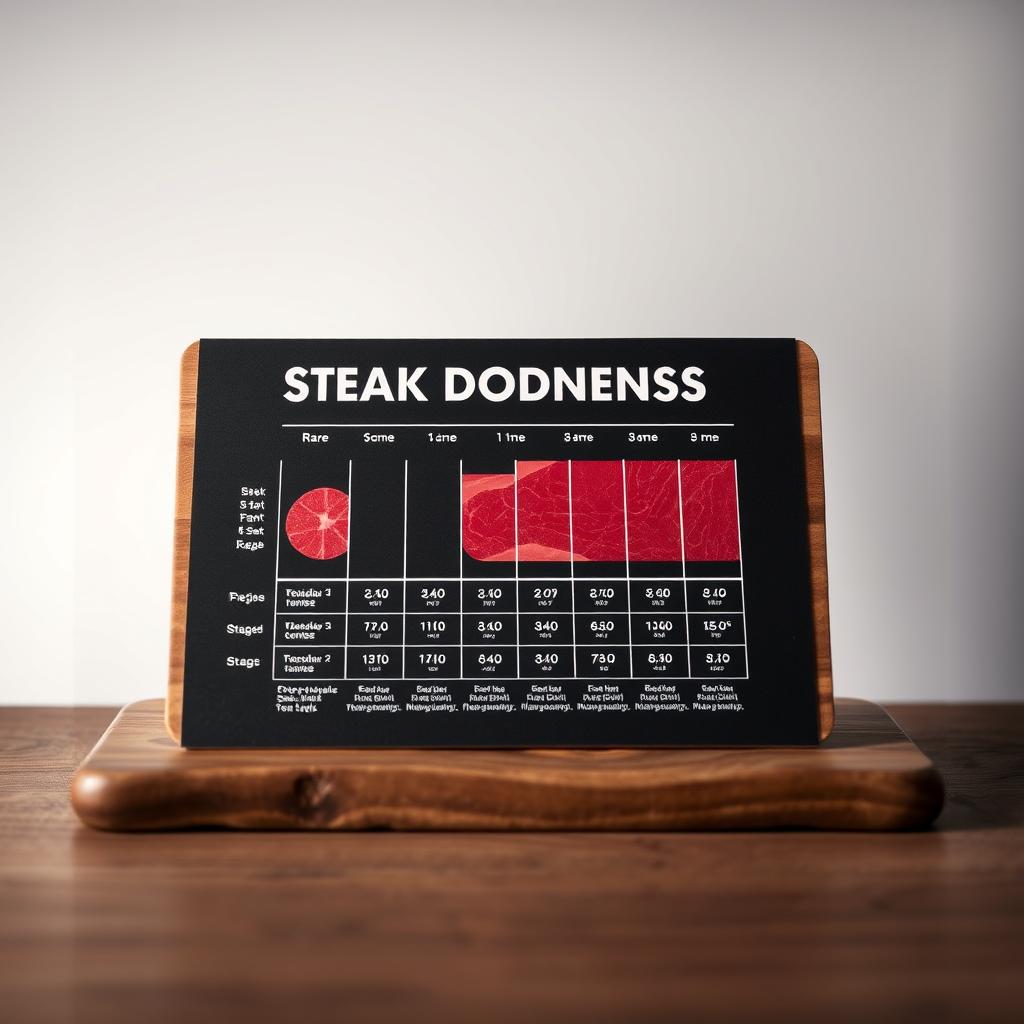
Carryover Cooking Explained
Carryover cooking refers to the phenomenon where the steak continues to cook internally after being removed from the heat source. This means that the steak will continue to rise in temperature by a few degrees as it rests. To account for this, it’s advisable to remove the steak from the oven when it’s a few degrees below your desired doneness.
French Doneness Preferences
In French cuisine, steak is often cooked to a specific doneness. For instance, a classic Filet Mignon is typically cooked to medium rare. Understanding these preferences can help you tailor your cooking to suit different tastes.
Troubleshooting Common Steak Cooking Problems
Achieving the perfect steak is a culinary goal, but common issues can arise. Even with careful planning and precise techniques, steak cooking techniques can sometimes go awry. Let’s explore some of the most common problems and their solutions.
Overcooked or Undercooked Steak
One of the most frequent issues is overcooking or undercooking the steak. To avoid this, use a meat thermometer to check the internal temperature. For more complex recipes, adjusting cooking times and temperatures is crucial.
Tough or Chewy Texture
A tough or chewy texture can result from improper cooking techniques or using the wrong cut of meat. Choosing the right cut and cooking it to the appropriate doneness can mitigate this issue.
Insufficient Browning
Insufficient browning can be due to inadequate pan preheating or incorrect oven temperature. Ensuring your pan is hot before adding the steak and using the right oven temperature can enhance browning.
Butter Burning Issues
Butter burning can occur if the garlic herb butter is applied too early or at too high a temperature. To prevent this, apply the butter towards the end of cooking or use a lower temperature.
By addressing these common issues, you can improve your oven-roasted steak results. Experimenting with different techniques and being mindful of the cooking process can lead to a perfectly cooked steak.
Delicious Side Dishes to Complement Your Steak
To create a truly memorable steak dinner, consider the impact of well-chosen side dishes. French cuisine, renowned for its rich flavors and intricate preparations, offers a variety of options that can complement steak perfectly.
Classic French Potato Preparations
Potatoes are a staple in French cuisine, and when prepared correctly, they make an excellent accompaniment to steak. Two classic preparations are particularly noteworthy: Pommes Frites and Gratin Dauphinois.
Pommes Frites
Pommes Frites, or French fries, are a popular side dish that pairs well with the richness of steak. The key to perfect Pommes Frites lies in achieving a crispy exterior while maintaining a fluffy interior. For a deeper dive into French culinary traditions, you might enjoy exploring other French recipes.
Gratin Dauphinois
Gratin Dauphinois is a rich and creamy potato dish that originates from the Dauphiné region in France. It involves thinly sliced potatoes baked in a creamy sauce, resulting in a dish that’s both comforting and sophisticated.
Traditional French Vegetable Sides
Vegetables are another crucial element in complementing steak. French cuisine offers a range of delicious vegetable sides, including Haricots Verts and Ratatouille.
Haricots Verts
Haricots Verts, or green beans, are a simple yet elegant side dish. When cooked al dente and seasoned with herbs and butter, they provide a refreshing contrast to the richness of steak.
Ratatouille
Ratatouille is a hearty vegetable stew originating from Provence. It combines eggplant, zucchini, bell peppers, and tomatoes, creating a flavorful and nutritious side dish that pairs well with steak.
French Sauces Beyond Herb Butter
While herb butter is a delicious accompaniment to steak, French cuisine offers a multitude of other sauces that can enhance the dining experience. From Béarnaise to Peppercorn sauce, there’s a wide range of flavors to explore.
As noted by French culinary expert, Joël Robuchon, “A good sauce can elevate a simple dish into something extraordinary.” This philosophy is particularly relevant when it comes to steak, where the right sauce can add depth and complexity to the meal.
Wine Pairing Suggestions for Your Garlic Herb Butter Steak
Unlock the full potential of your garlic herb butter steak with expert wine pairing suggestions. The rich flavors of the steak, combined with the aromatic garlic herb butter, demand a wine that can stand up to and complement these bold flavors.
French Red Wine Regions
France is renowned for its wine production, with regions like Bordeaux and Burgundy offering some of the world’s best red wines. These wines are particularly well-suited to pairing with garlic herb butter steak.
Bordeaux Selections
Bordeaux wines, known for their complexity and aging potential, are a great match. Try a Château Lafite Rothschild or Château Margaux for a luxurious pairing experience.
Burgundy Options
Burgundy’s Pinot Noirs, while more delicate, can beautifully complement the tender steak. Look for wines from Côte de Nuits for their rich, nuanced flavors.
Regional French Pairings
Exploring regional pairings can add an exciting dimension to your meal. For instance, a steak from the Normandy region might pair nicely with a local cider or a wine from a nearby region.
Non-Wine Beverage Alternatives
Not everyone may prefer wine, or you might be looking for alternatives. Consider a craft beer with malty, caramel flavors to complement the steak’s richness. For a non-alcoholic option, a French press coffee or a rich tea can be a satisfying choice.
When pairing beverages with your garlic herb butter steak, remember that the key is balance and harmony. The beverage should complement the flavors of the steak without overpowering it.
- For a bold steak, choose a full-bodied red wine.
- Consider the cooking method and seasonings when selecting a pairing.
- Don’t be afraid to experiment with different regional pairings.
Variations on the Classic Garlic Herb Butter Recipe
Garlic herb butter is a versatile compound that can be modified to suit various tastes. By incorporating different ingredients, you can create unique flavor profiles that elevate your steak dishes.
Roquefort and Garlic Butter
For a bold, pungent flavor, try adding Roquefort cheese to your garlic herb butter. The tangy, slightly sweet taste of Roquefort pairs exceptionally well with the richness of steak. To make this variation, simply crumble Roquefort into your garlic herb butter mixture and blend until smooth.
Provençal Herb Butter
Inspired by the sun-kissed fields of Provence, this herb butter variation incorporates fresh herbs like thyme, rosemary, and oregano. These herbs add a fragrant, slightly bitter flavor that complements the richness of garlic and butter. Use fresh, high-quality herbs to ensure the best flavor.
Truffle and Garlic Butter
For a luxurious twist, infuse your garlic herb butter with truffle oil or shaved truffles. The earthy, umami flavor of truffles pairs decadently with garlic and steak. Start with a small amount of truffle and adjust to taste, as truffle flavor can be intense.
Cognac-Infused Herb Butter
Add a touch of sophistication with Cognac-infused herb butter. By mixing a small amount of Cognac into your garlic herb butter, you can create a rich, complex flavor profile. The Cognac adds a subtle depth that enhances the overall taste experience.
These variations on the classic garlic herb butter recipe offer a range of flavors to suit different tastes and preferences. Feel free to experiment and combine different ingredients to create your own unique herb butter variations.
Repurposing Leftover Steak and Herb Butter
French culinary traditions offer a wealth of inspiration for repurposing leftover steak into new and exciting meals. With a bit of creativity, you can transform last night’s dinner into tomorrow’s lunch or dinner, all while maintaining the essence of French cuisine.
French-Inspired Steak Sandwich Ideas
A steak sandwich can be elevated to a French-inspired bistro classic by using a crusty baguette, adding some sautéed onions or mushrooms, and incorporating the leftover herb butter. Consider adding a layer of gratin or roasted vegetables to enhance the flavor profile.
Steak Salad with French Vinaigrette
Slicing the leftover steak thinly and serving it atop a bed of mixed greens, cherry tomatoes, and a light French vinaigrette can make for a refreshing and satisfying salad. The key is in the preparation of the vinaigrette, using high-quality olive oil and a touch of Dijon mustard.
Creative Uses for Leftover Herb Butter
Leftover herb butter is too valuable to discard. It can be used to enhance a variety of dishes, from roasted vegetables to grilled fish. Simply melt it and brush it over your chosen dish for an instant flavor boost.
Steak and Eggs with a French Twist
For a luxurious breakfast, serve sliced leftover steak with eggs, whether scrambled, poached, or made into an omelette. Adding a sprinkle of fresh herbs and a side of toasted bread with a pat of the leftover herb butter can make for a decadent start to the day.
Conclusion
Cooking garlic herb butter steak in the oven is a simple yet impressive way to enjoy a delicious meal. This versatile dish can be served on various occasions, from casual dinner gatherings to special events.
The techniques outlined in this article will help you achieve a perfectly cooked oven-roasted steak, infused with the rich flavors of garlic herb butter. By experimenting with different herb combinations and steak cuts, you can put your own twist on this classic recipe.
Whether you’re a seasoned chef or an adventurous home cook, the garlic herb butter steak in oven recipe is sure to become a staple in your culinary repertoire. So, don’t be afraid to get creative and try new variations – your taste buds will thank you.
FAQ
What is the best cut of steak for cooking in the oven?
The best cuts for oven cooking include ribeye, New York strip, filet mignon, and French cuts like entrecôte and bavette, each offering unique characteristics and flavors.
How do I achieve perfect doneness when cooking steak in the oven?
Use a meat thermometer to ensure the steak reaches your desired internal temperature, and let it rest after cooking to allow for carryover cooking.
What are the benefits of using garlic herb butter on steak?
Garlic herb butter adds rich, aromatic flavors to the steak, enhancing its overall taste and aroma, and can be customized with various herbs and ingredients.
Can I make garlic herb butter ahead of time?
Yes, garlic herb butter can be made ahead and stored in the refrigerator or freezer, allowing for convenient use when cooking steak.
How do I prevent butter from burning when cooking steak in the oven?
To prevent butter from burning, apply it towards the end of cooking, or use a lower oven temperature and monitor the steak closely.
What are some classic French side dishes that pair well with steak?
Classic French potato preparations, traditional French vegetable sides, and French sauces like Béarnaise or Peppercorn sauce complement steak nicely.
What wine pairs well with garlic herb butter steak?
French red wines from regions like Bordeaux and Burgundy, such as Cabernet Sauvignon and Pinot Noir, pair well with garlic herb butter steak.
Can I repurpose leftover steak and herb butter?
Yes, leftover steak and herb butter can be used in various dishes, such as French-inspired steak sandwiches, salads with French vinaigrette, and breakfast dishes with a French twist.
What are some variations on the classic garlic herb butter recipe?
Variations include Roquefort and garlic butter, Provençal herb butter, truffle and garlic butter, and Cognac-infused herb butter, offering unique flavor profiles.
Why is it important to bring steak to room temperature before cooking?
Bringing steak to room temperature ensures even cooking and helps prevent the outside from burning before the inside reaches the desired temperature.
What is the role of dry brining in steak preparation?
Dry brining enhances the steak’s flavor and tenderness by allowing salt to penetrate the meat, resulting in a more complex taste experience.
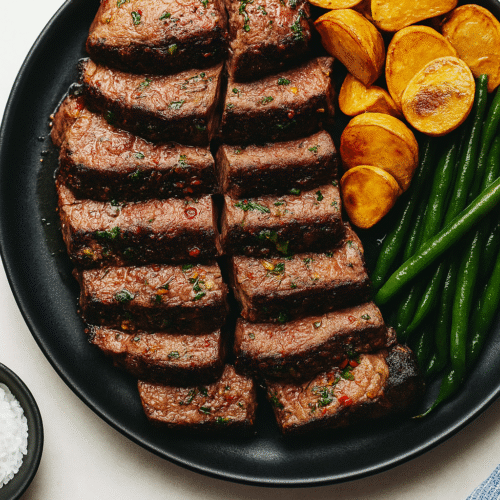
Garlic Herb Butter Steak in Oven
Ingredients
- 1 large thick rib-eye steak approx. 3 lb / 1500g, tomahawk rib-eye recommended
- 2 onions halved horizontally
- 4 garlic cloves smashed with peel on
- 2 teaspoons fresh cracked black pepper divided
- 1 teaspoon kosher salt
- 1 crumbled beef bouillon cube optional
- 1/3 cup low-sodium soy sauce
- 1/2 cup melted butter or olive oil
- 1 tablespoon hot sauce e.g., Sriracha
- 1 tablespoon minced garlic
- 1 tablespoon flat-leaf Italian parsley chopped
- 1 tablespoon curly parsley chopped
- 1/2 teaspoon red chili pepper flakes optional
Instructions
Prepare the steak:
- Take the steak out of the refrigerator 1–2 hours before cooking to bring it to room temperature. Pat dry with paper towels.
Preheat the oven:
- Set oven to broil mode at 500ºF (260ºC).
Season the steak:
- Generously season the steak with salt, pepper, and the crumbled beef bouillon cube if using.
Broil the steak:
- Place smashed garlic cloves and onion halves in a baking pan and set the steak on top (the onions act as a roasting rack). Broil for 5–7 minutes on the top rack, flip the steak, and broil another 5 minutes.
Finish roasting:
- Lower the oven temperature to 400ºF (200ºC) and continue roasting the steak for another 10–12 minutes, until the desired doneness. Use an instant-read thermometer:
- 125ºF (51ºC) for medium-rare
- 135ºF (57ºC) for medium
Rest the steak:
- Remove from oven, tent loosely with foil, and let rest for 10 minutes.
- Prepare the herb butter sauce:
- Meanwhile, mix the soy sauce, melted butter, hot sauce, minced garlic, chopped parsley, remaining black pepper, and red chili flakes together in a bowl.
Serve:
- Slice the steak, removing the bone first if necessary. Drizzle generously with the herb butter sauce before serving. Enjoy!
Notes
Nutrition (Approximate per serving)
- Calories: 560 kcal
- Protein: 40g
- Fat: 45g
- Carbohydrates: 4g
- Fiber: 1g
- Sodium: 750mg

